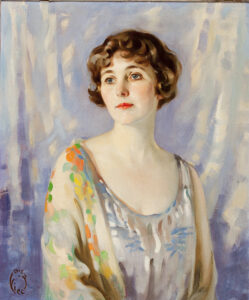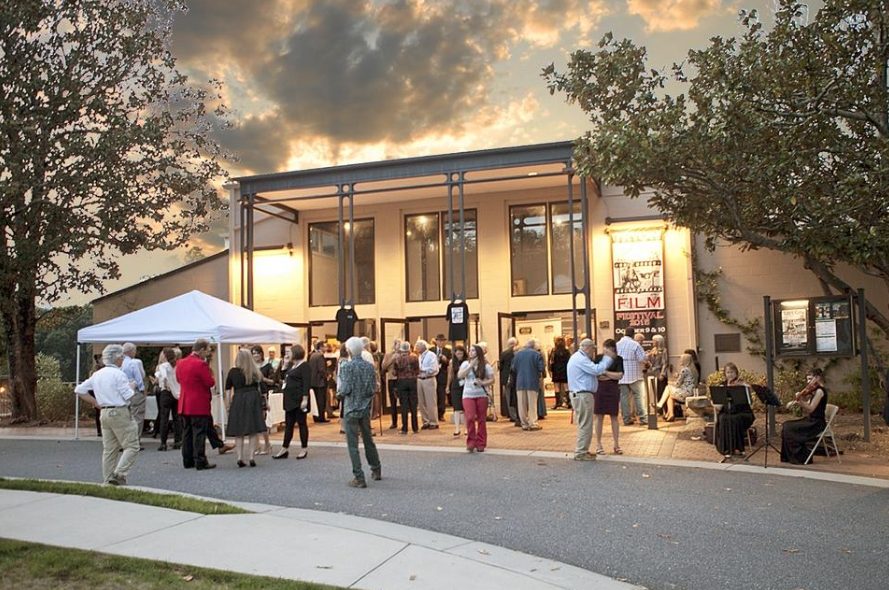Since its inception, Tryon Fine Arts Center (TFAC) has been the creative driving force for performances, exhibits, arts education, and community partnerships in the Foothills. On February 12, 1969, TFAC first opened to the public with a performance of The Madwoman of Chaillot from Tryon Little Theater. TFAC was originally founded as a home for the many active arts organizations in the Foothills. While these organizations have matured and found homes of their own, Tryon Fine Arts Center has grown into a thriving arts center in its own right, engaging the community with performing and visual arts events each year. Learn more about our history below and join us in looking forward.
A lot can happen in 50 years!
This building stands where a frame house once stood next to property that took years to fully acquire and many more to evolve into the campus we now enjoy.
A civic auditorium had been under discussion in Tryon since 1946. After the war, the visual and performing arts began to take on new life. Always attractive to performers, artists, and writers, Tryon was already considered an artists colony. As Fanning Hearon described in his heartfelt essay in Tryon Fine Arts Center’s first program in 1969, “Writers, painters, musicians, actors, teachers, voyageurs, real article intellectuals, and people who work wonders with their hands – Such people come to Tryon,” he continued. “They gave shows, concerts, and lectures in churches, schools, and restaurants. They had meetings in private homes, lofts, and basements and exhibitions wherever they could find a wall or a table. They worked at their crafts in crowded corners…” You can see why the topic of a small auditorium and home for the arts was never far from anyone’s mind.
Violet Parish-Watson
Those early discussions placed Lanier Library, Tryon’s oldest civic organization, as the potential umbrella for these scattered groups. Much later, in February 1964, Tryon Little Theater got a ball rolling and voted to raise funds to purchase a barn from the estate of Violet Parish-Watson who had died a little over a year earlier. They distributed a brochure stating their hope to acquire a “home of their own” – a building which they proposed to share with other arts groups in the community. Unbeknownst to them, Violet’s will included a bequest to be matched “for creating and equipping a civic auditorium and art(s) center in the immediate area of Tryon, North Carolina.”
John Landrum and Baxter Haynes, Violet’s executors, had been working to find a way to honor this conditional bequest without violating any stipulations, one of which was that St. Luke’s Hospital would receive the funds if the two-year deadline for launching the arts center project could not be met. The executors now had less than a year to organize existing arts groups and community representatives into a new civic organization and to match the bequest of $25,000. The match could not be a single large gift. To assure community involvement, Violet insisted it be collected by public subscription and come from more than 100 people.
A forum was held September 3, 1964 – only two months from the deadline – with representatives from Tryon Little Theater, Tryon Concert Association, Tryon Arts and Crafts, the Tryon Chamber of Commerce, and three people representing the community at large. The executors agreed that Tryon Little Theater, as an existing arts-related nonprofit, qualified to receive and hold the bequest. All agreed that contributions for the new project could be passed through the Theater’s existing account to assure tax deductibility until the new organization was up and running. James H. Black agreed to chair the Tryon Fine Arts Center fund drive.
Violet’s bequest was more than matched in a month’s time! Tryon Fine Arts Center named a steering committee and more money began to roll in. $130,000 was raised through the generosity of thirteen residents willing to become founders. Rosetta Samuel French promised her 9-foot Steinway grand piano. Andy Wetterer would donate the interior decorating. Green Blades Garden Club built up a savings account for landscaping. $15,000 was raised by volunteers hoping to cover the cost of the luxuriously padded seats by selling them for fifty bucks apiece from a table in the post office. Tryon Little Theater pledged curtains, lights, and properties and, six months later, voted to sell their barn and contribute those funds and other cash and pledges to the Tryon Fine Arts Center project. As TLT president Fanning Hearon wrote in his essay, “We had lost our ‘First Love,’ but found another – not one we could touch and feel, but [one] with more promise.” With the help of hundreds of residents from all walks of life, Violet’s vision would soon become reality. Ground was broken on December 13, 1967.
The building was dedicated at 12:30 on February 2, 1969 with an open house all afternoon. A black tie gala was held the evening of February 12 when Tryon Little Theater presented “The Madwoman of Chaillot.” It will always be amazing to consider that Tryon Fine Arts Center was financed entirely by private contributions – no public funds or grants of any kind – and continued to operate for many years relying solely on contributions. A small bank loan was retired in 1973. The Center has remained debt-free thanks to the skill and foresight of the original Board of Directors who, in addition to choosing appropriate broad principles that would serve well into the future, recognized the need for an endowment fund which has always been treated with care and respect.
For most of these 50 years, TFAC served as an umbrella organization for a varying number of affiliates, each of which had their own governance, income, and bylaws. These arts organizations – those in residence as well as those using the facility frequently – provided nearly all programming, classes, and exhibits at the new Center. They shared willingly in the many volunteer jobs that kept the building in operation. TFAC presented only one or two special events per year and hosted several long running community events on the grounds, but until the first executive director was hired in 2005, TFAC was mainly a landlord struggling to keep costs low for affiliates under their umbrella while building an endowment to ensure its future.
It is breathtaking to realize how much has happened in the last 14 years. Some affiliates, through luck and hard work, outgrew their spaces at TFAC and now have their own successful ventures in attractive and accessible locations. A few groups disbanded over the years, but new ones came in. Many of them, as well as some original affiliates, still make use of the building and grounds as needed. TFAC created its own Main Stage Series 14 years ago and established several instantly popular fundraisers that serve a broad demographic bringing in funds while generating new – and renewed – interest in the arts as well as in TFAC’s well-honed mission. It would be impossible to rate the importance of each decade’s many successes, but there is no denying that each stage of TFAC’s evolution led slowly but surely to the early Boards’ vision of a strong organization on a beautiful campus serving the community in many different ways.
The building was dedicated at 12:30 on February 2, 1969 with an open house all afternoon. A black tie gala was held the evening of February 12 when Tryon Little Theater presented “The Madwoman of Chaillot.” It will always be amazing to consider that Tryon Fine Arts Center was financed entirely by private contributions – no public funds or grants of any kind – and continued to operate for many years relying solely on contributions. A small bank loan was retired in 1973. The Center has remained debt-free thanks to the skill and foresight of the original Board of Directors who, in addition to choosing appropriate broad principles that would serve well into the future, recognized the need for an endowment fund which has always been treated with care and respect.
For most of these 50 years, TFAC served as an umbrella organization for a varying number of affiliates, each of which had their own governance, income, and bylaws. These arts organizations – those in residence as well as those using the facility frequently – provided nearly all programming, classes, and exhibits at the new Center. They shared willingly in the many volunteer jobs that kept the building in operation. TFAC presented only one or two special events per year and hosted several long running community events on the grounds, but until the first executive director was hired in 2005.


